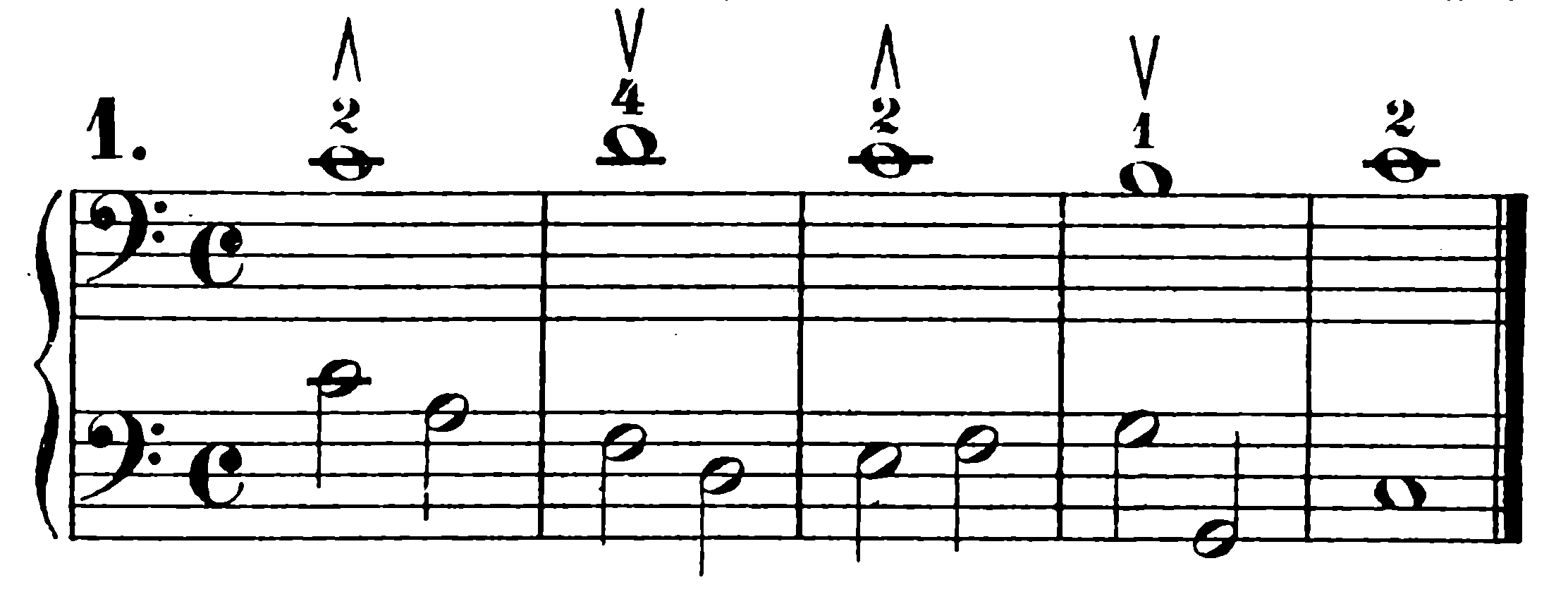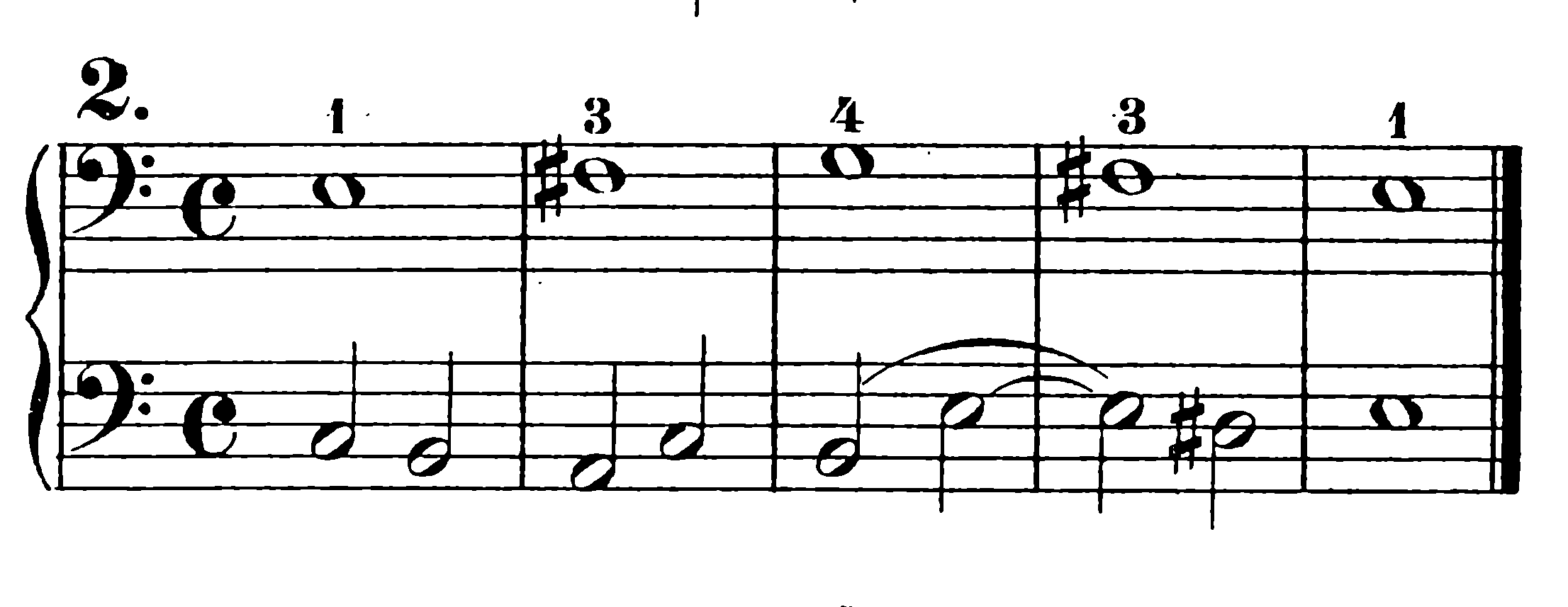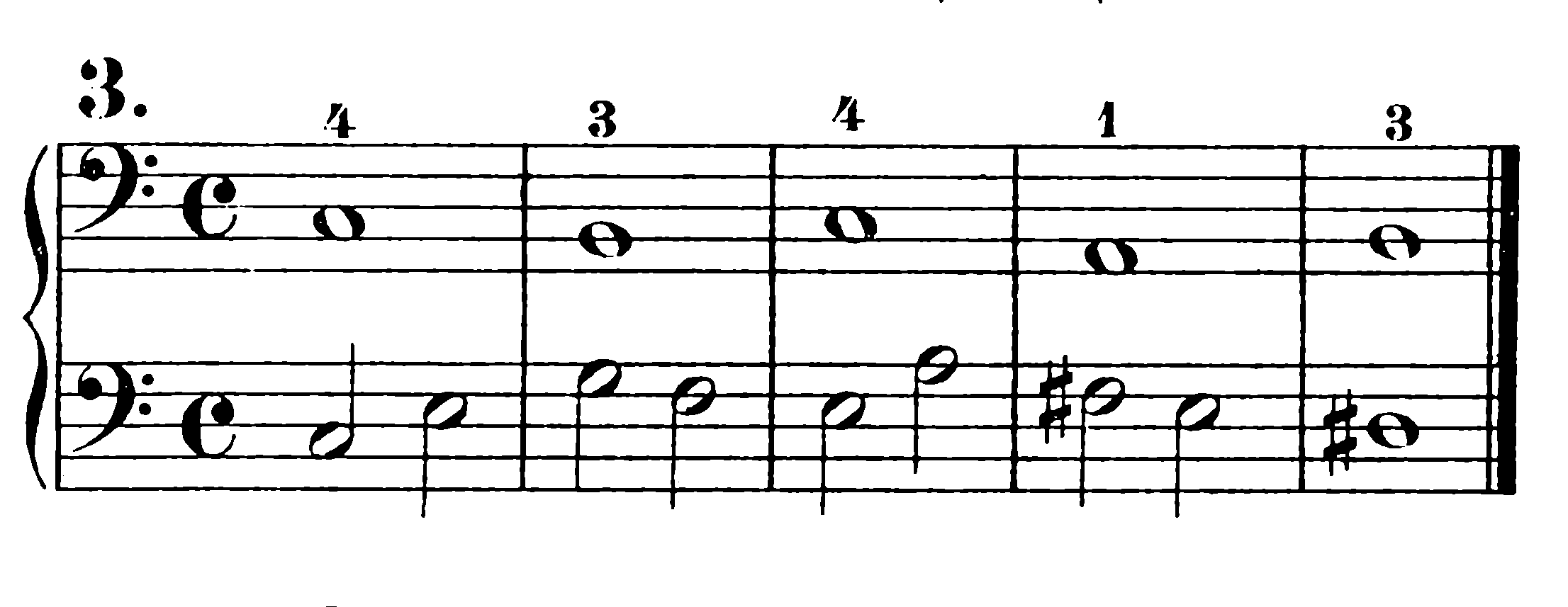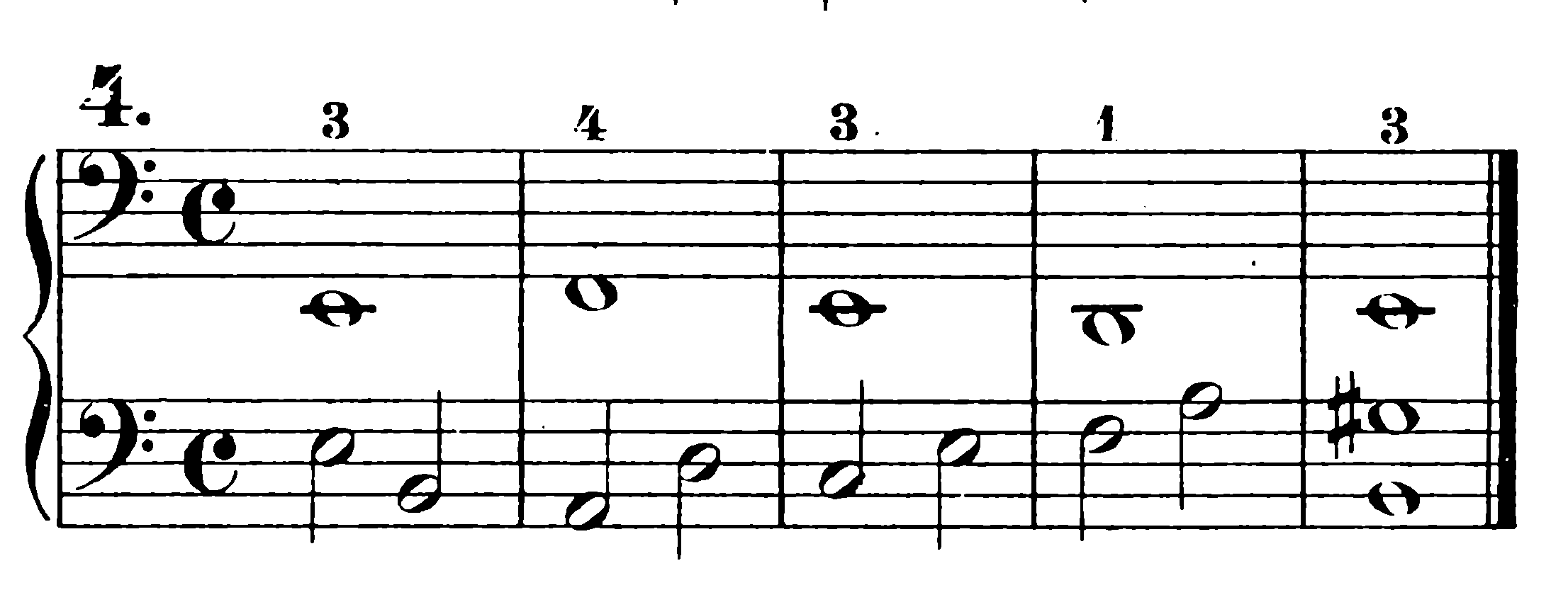First Position
The player places the first (index) finger on the A-string about 65 millimeters from the nut, presses down firmly, and plays the note against the open D-string. He then adjusts the pitch up and down with the first finger until the interval (a major sixth) is in tune.
Then, he puts his second (middle) finger on the string next to the first with a small space between them. He rests the thumb on the neck of the cello opposite the first two fingers. Then he puts the third and fourth fingers on the string next to the second with a small space between each. The note created with the fourth finger is an octave above the pitch of the open D-string and can easily be adjusted by playing both strings at the same time. This hand position is called first position. All the exercises and examples in this section are in this position.
Above all, the player must take care to learn this position thoroughly, primarily to be able to find it without testing the first and fourth fingers in the way mentioned above. By placing the hand and fingers in the same spots on the other strings, you get first position on the D-, G-, and C-strings. The following notes can be created by placing the four fingers on all four strings:




In the following short examples, containing the accompaniment of a second cello, the first finger stays on the string all the time. The first finger and thumb remain in place; the other fingers are only lifted to allow for a lower-pitched note.
Accompaniment

The first finger stays on the string throughout; the second is not lifted until measure 4.
Accompaniment

The first finger stays on the string throughout; the third is not lifted until measure 5.
Accompaniment

The first finger stays on the string throughout; the second and third fingers also stay on the string for the first three bars and are only lifted at measure 4.
Accompaniment

The first finger stays on the string throughout; the second and third fingers also stay on the string for the first three bars and are only lifted at measure 4.
The following examples use the open strings in addition to four fingers. The first finger cannot always stay on the string, and thereby loses its “double hold” position with the thumb; the player’s thumb alone must keep the position in place. In general, it is the thumb that keeps the fixed position on the neck of the cello, since the first finger (as we will soon see) can also change its place within the position.



Accompaniment
